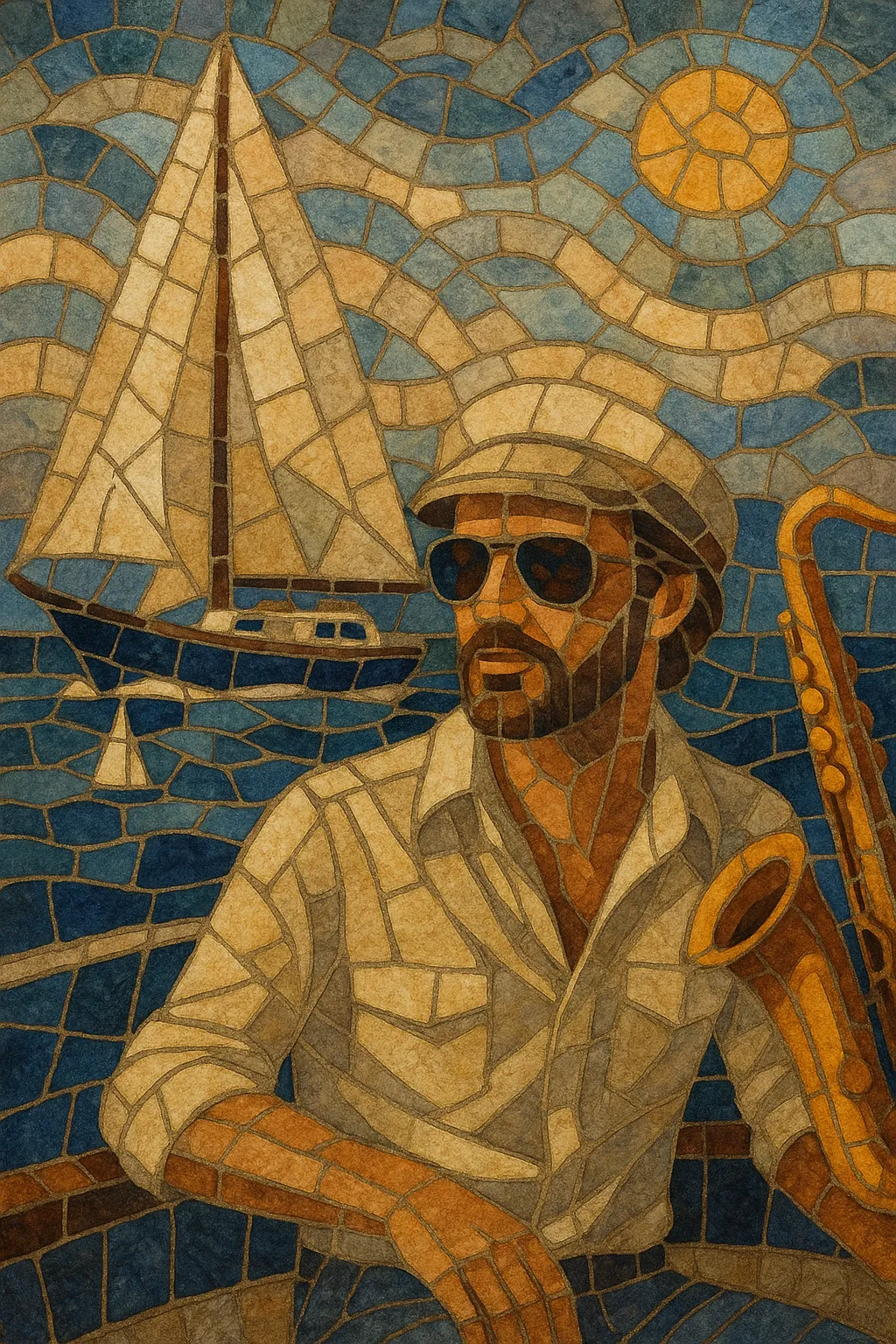Yacht rock is a polished, radio-friendly blend of soft rock, R&B, and jazz crafted by elite Los Angeles session players in the late 1970s and early 1980s. Its hallmark is a silky production sheen: immaculate rhythm sections, glossy backing vocals, and sophisticated chord changes delivered with effortless cool.
The sound leans on mid-tempo grooves, Fender Rhodes and other electric pianos, clean chorus‑tinged guitars, analog synth pads, and occasional saxophone or tasteful guitar solos. Harmonically, it favors major 7ths, minor 7ths, add9s, and slick modulations borrowed from jazz and soul. Lyrically, it mixes urbane romance, bittersweet introspection, and escapist imagery (sometimes nautical) with a knowing wink.
Think of it as the “West Coast” studio ideal: impeccably arranged songs, airtight musicianship, and smooth vocals designed for convertible drives along the marina as much as for hi‑fidelity home stereos.
Yacht rock emerged from the Los Angeles studio ecosystem, where first-call session players and producers shaped a refined strain of soft rock. Drawing on AOR, blue‑eyed soul, R&B, and jazz fusion, artists pursued a sleek, professional sound built around sophisticated harmonies and pristine engineering. The scene revolved around top-tier musicians (e.g., members of Toto, the Doobie Brothers camp, and Steely Dan collaborators) and producers like Ted Templeman, Jay Graydon, Michael Omartian, and David Foster.
The genre’s commercial apex produced enduring hits defined by tight rhythm sections, Rhodes-driven textures, and velvet vocal stacks. Singles by Christopher Cross, Kenny Loggins, Michael McDonald (solo and with the Doobie Brothers), Boz Scaggs, Toto, Ambrosia, Player, and Little River Band exemplified the aesthetic. The famous “Rosanna shuffle” (Jeff Porcaro) codified a rhythmic ideal: a laid‑back, propulsive half‑time feel with 16th‑note ghosts and hi‑hat finesse.
With the rise of MTV, new wave, and rougher guitar textures, the yacht sound receded from pop primacy. Many of its architects pivoted to power ballads, adult contemporary, film soundtracks, or production work, but the core style’s chart dominance waned as tastes shifted toward brighter synth-pop and edgier rock.
The term “yacht rock” was popularized in 2005 by the satirical web series Yacht Rock, which sparked a critical reevaluation. DJ culture (especially Balearic selectors) and reissue labels further rehabilitated the catalog. SiriusXM’s Yacht Rock Radio and tribute acts (e.g., Yacht Rock Revue) expanded the audience. The style’s lush textures and adult-romance themes influenced sophisti‑pop, Japanese city pop, and later retro-internet genres like vaporwave and chillwave, cementing yacht rock as a timeless shorthand for luxurious, meticulously crafted pop.


